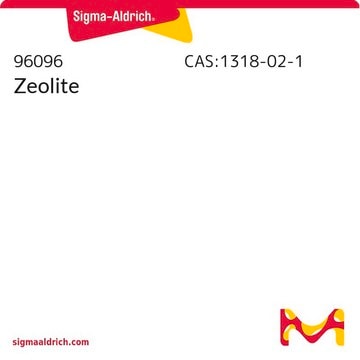348848
Titanium
foil, thickness 0.025 mm, 99.98% trace metals basis
About This Item
Productos recomendados
Análisis
99.98% trace metals basis
formulario
foil
temp. de autoignición
860 °F
resistividad
42.0 μΩ-cm, 20°C
grosor
0.025 mm
bp
3287 °C (lit.)
mp
1660 °C (lit.)
densidad
4.5 g/mL at 25 °C (lit.)
aplicaciones
battery manufacturing
cadena SMILES
[Ti]
InChI
1S/Ti
Clave InChI
RTAQQCXQSZGOHL-UHFFFAOYSA-N
Categorías relacionadas
Descripción general
Aplicación
- Medical Devices: Due to its biocompatibility, it is widely used in medical applications, such as in joint replacement implants, dental implants, and surgical instruments (Britannica).
- Corrosion Resistance: Its resistance to corrosion by both water and chemical media leads to its use in chemical processing industries for equipment like heat exchangers and reactors (Royal Society of Chemistry).
Cantidad
Código de clase de almacenamiento
11 - Combustible Solids
Clase de riesgo para el agua (WGK)
nwg
Punto de inflamabilidad (°F)
Not applicable
Punto de inflamabilidad (°C)
Not applicable
Equipo de protección personal
Eyeshields, Gloves, type N95 (US)
Certificados de análisis (COA)
Busque Certificados de análisis (COA) introduciendo el número de lote del producto. Los números de lote se encuentran en la etiqueta del producto después de las palabras «Lot» o «Batch»
¿Ya tiene este producto?
Encuentre la documentación para los productos que ha comprado recientemente en la Biblioteca de documentos.
Los clientes también vieron
Artículos
Biomedical implants are essentially foreign substances within the human body that must survive many years’ exposure to demanding mechanical and physiological conditions. Despite these challenges, metal implants have been widely used to substitute for or rebuild hard tissues such as bones and teeth.
Nuestro equipo de científicos tiene experiencia en todas las áreas de investigación: Ciencias de la vida, Ciencia de los materiales, Síntesis química, Cromatografía, Analítica y muchas otras.
Póngase en contacto con el Servicio técnico


